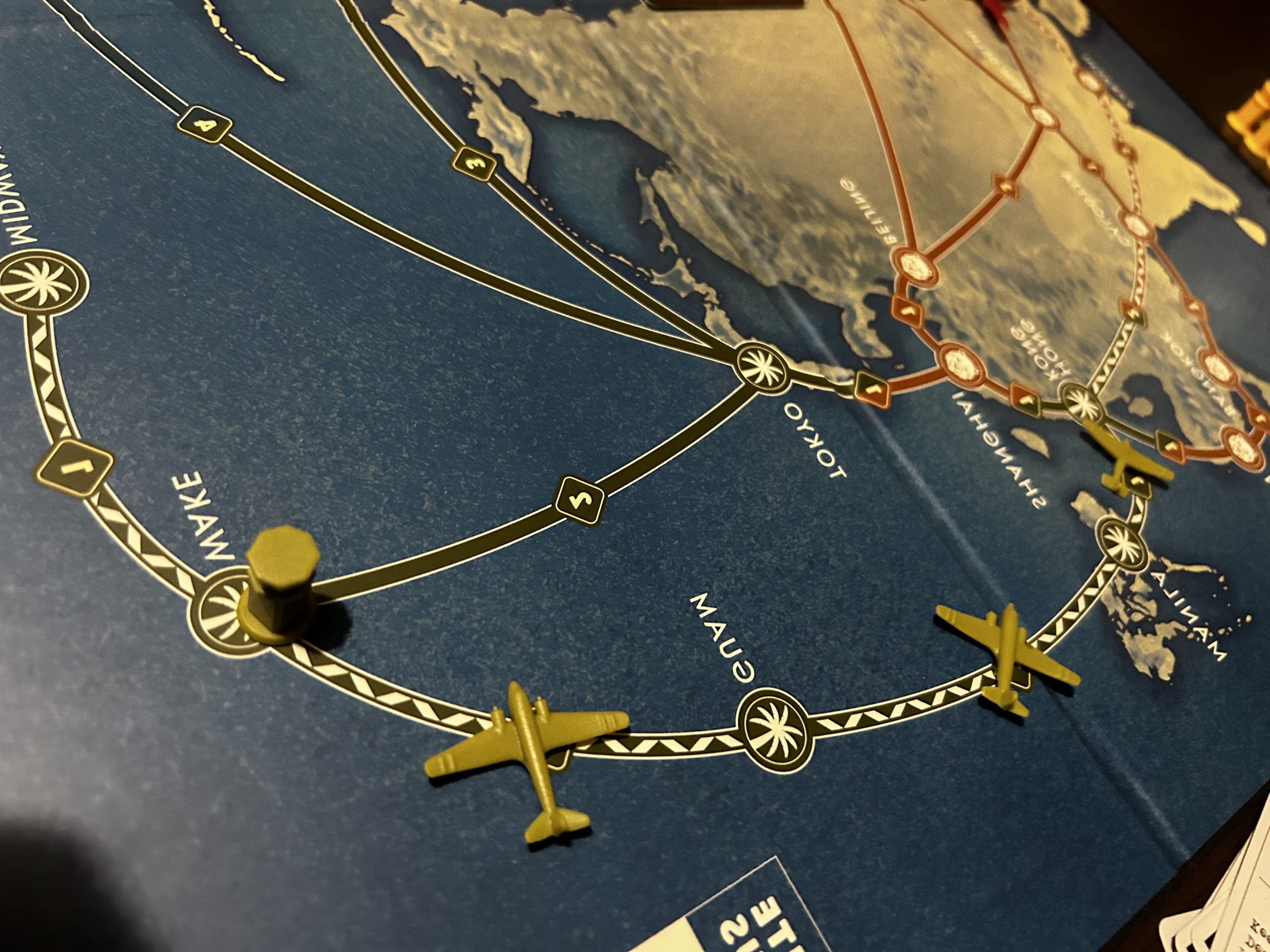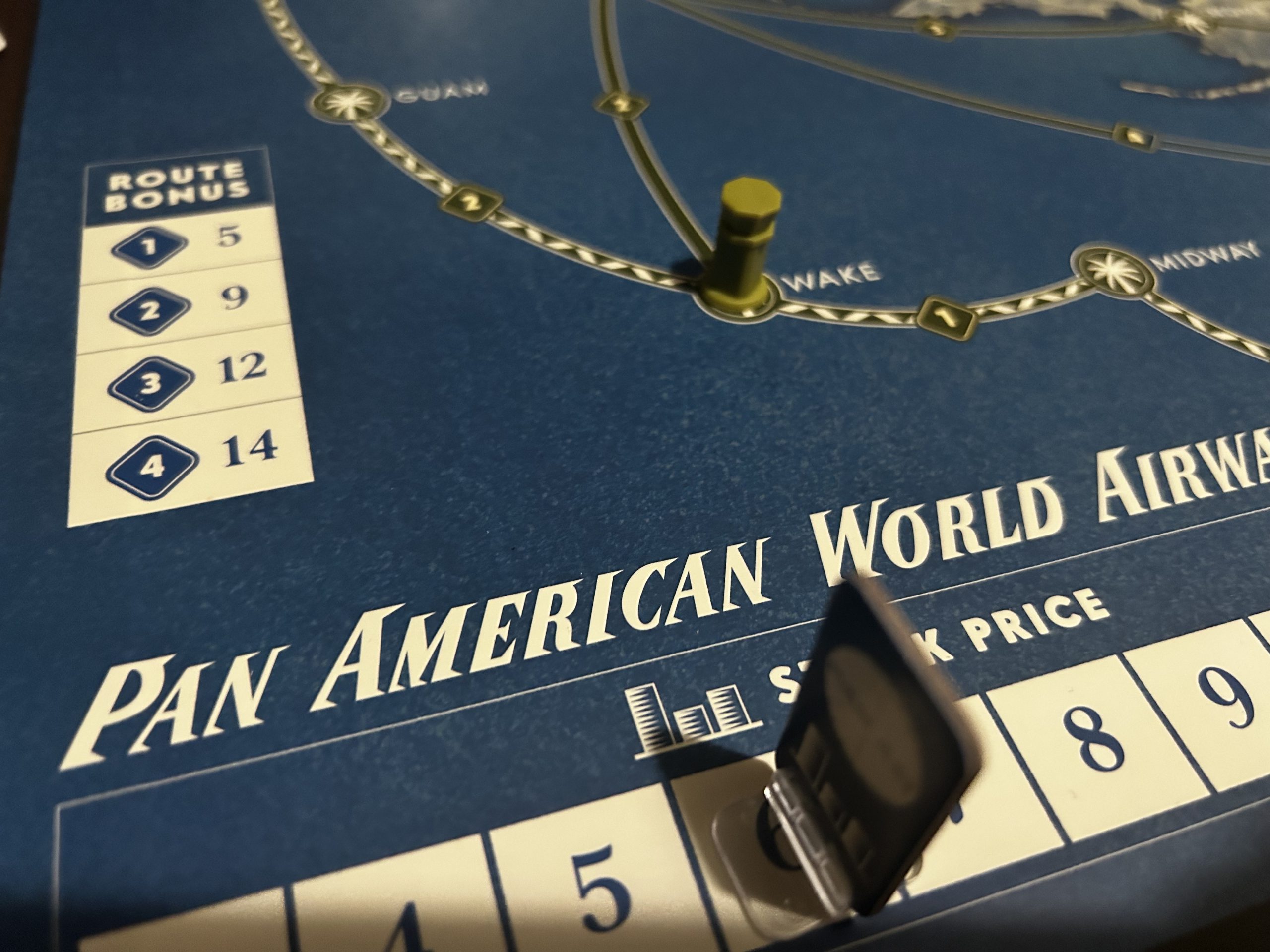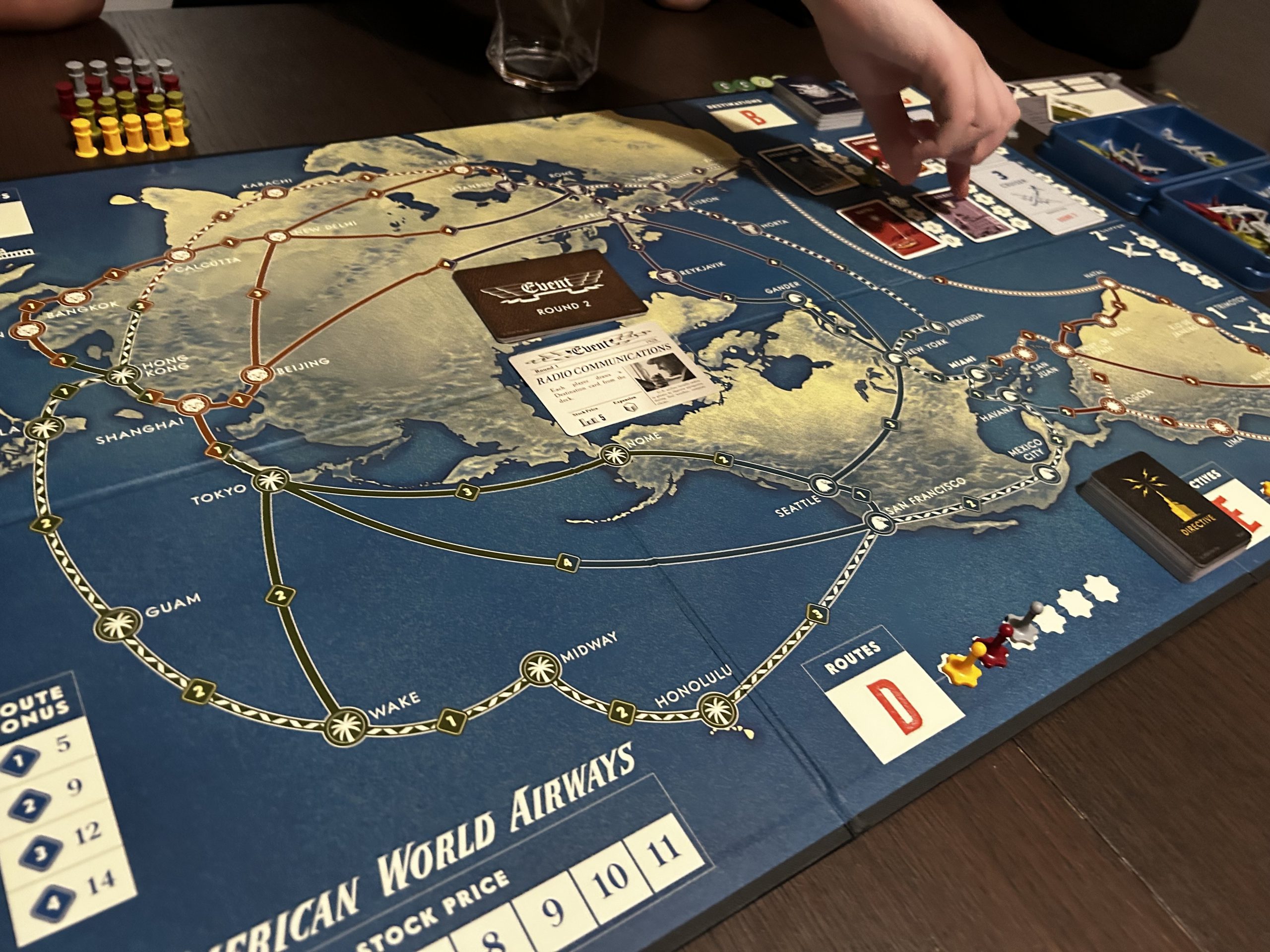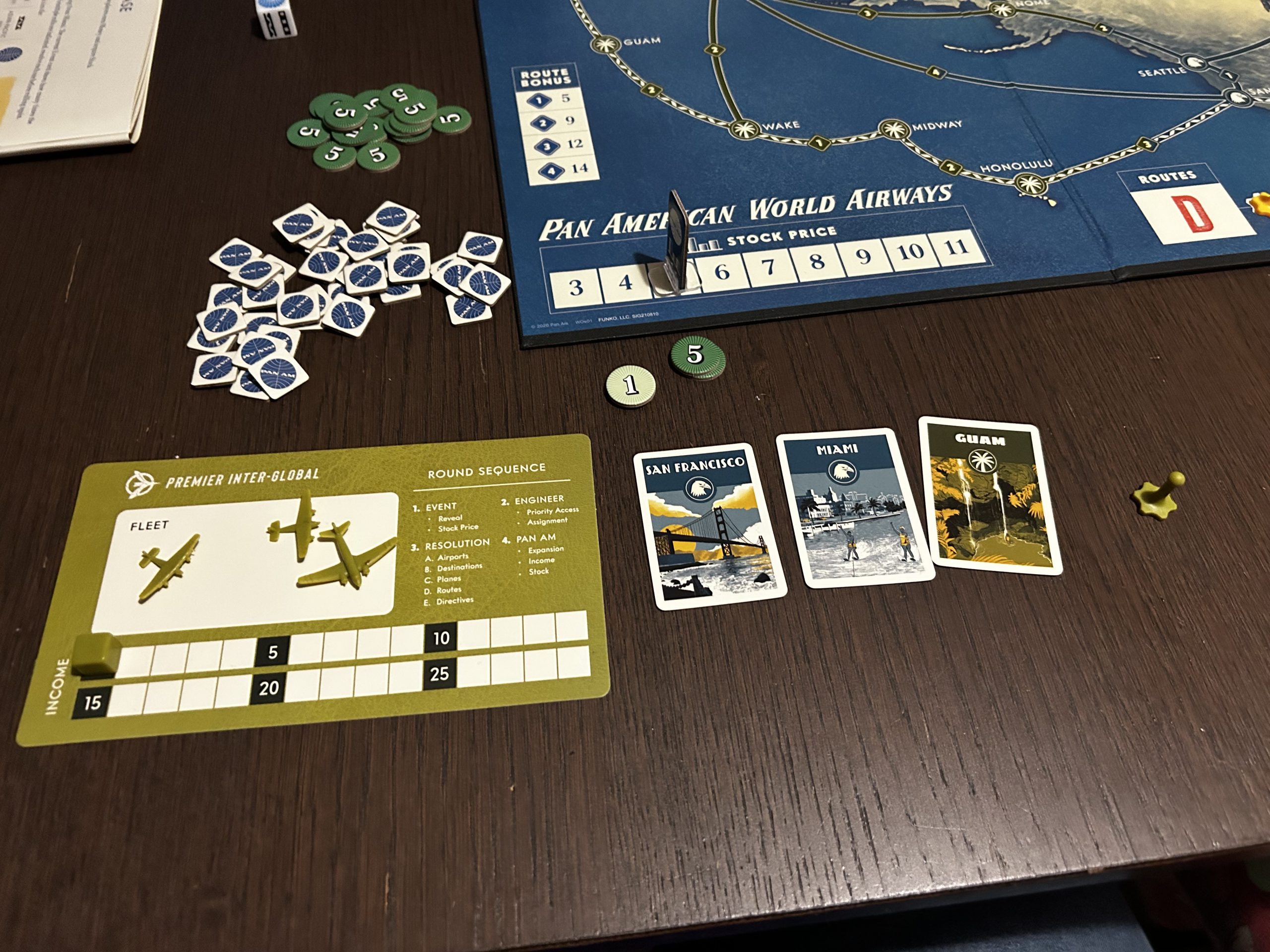Pan Am The Game challenges you to build routes faster than Pan Am themselves, for profit
For a game called Pan Am The Game you’d not be silly to think that you might be controlling the titular company as they expand their network of flights across the world, however here you and up to three others have to outpace Pan Am for massive profits.
Pan Am The Game is Funko Games’ latest outing; a two-to-four player route-claiming title that challenges you to snap up routes around the world so that you can sell them to Pan Am for profit. Each player controls a rival airline, and must allocate their engineers, during a bidding round, in order to take actions around the map of the world that serves as a central board.
While the map of the world might seem daunting, and the location cards that players collect might immediately summon memories of Pandemic, Pan Am The Game is actually more of a worker-placement, one-shot engine building experience. Each player starts with planes, for claiming routes, a couple of coins and a few location cards — which symbolise where the player can ‘land’. Beyond that, everything is up to their workers.
Players take turns placing their engineers on the spaces around the board — be that for action (Directive) cards, airport tokens, planes, destination cards or the chance to build a route. Some of those options (Airport, Destination and Planes) will only be awarded to the highest bidder which is the player that placed last, while the other options simply reward in order of placement during the resolution phase.
Let’s go through each of them, as they touch on most of the elements of the game. Directive cards are like action cards in other games, they each have a note on them denoting what they do and when they can do it. Engineers who are placed in a slot to get a Directive card get to move before the normal placement phase next time. These cards shouldn’t be underestimated, sometimes they let you sell a route, ignore a share price, gain a plane or more… they are only rarely ineffective.
Airports are incredibly powerful buildings that can be placed on one of the map’s destinations when won. With an airport a player doesn’t need a destination card in order to make a route, so a careful placement can give them the chance to secure multiple powerful routes in quick succession. People know this though, and with the most expensive bid position being nine currency, it can become a vicious gamble to chase.
Planes are required to claim routes. There are four types, Trimotor, Clipper, Cruiser and Jet. These can each be used for progressively larger routes. For instance, Beijing to Paris or Paris to New York can only be claimed by Jets. Jets are expensive and only unlock on the fifth turn (Cruisers unlock earlier), and means that the last of the seven rounds are sure to be tricky if you’re chasing big numbers against at least one other player, also, interestingly, Pan Am would not normally acquire those routes throughout the progression of the game — you’ll need to either roll lucky for Pan Am’s turn, have some luck with the Turn Events or have a strong hand of Directive cards.
Destination cards come next. You need the two destinations on either side of a numbered route in order to claim it. This, as with planes and airports is bidding powered, and being that bidding continues until all engineers are spent, people can very easily try to push you out of the bidding for a destination you see as valuable.
The final potential action is through the Routes Slots. You form a route by having either a destination card or airport on both sides of a route that is otherwise unclaimed. The routes are themed by continent, and you can exchange a destination of one colour for a destination of the same colour, or two destinations of the same colour for one destination of a different. There’s a lot to be gained by collecting destination cards and then swapping them out like this, and it means that even after Pan Am has started racing around the board there’s still use for full routed-out destinations.
If you claim a route then you place an appropriate level plane on the board and increase your income; later you can sell it to Pan Am for a payoff (but loss of income) if they reach you while expanding, or you can sell it to them through events, directives or if Pan Am rolls a Pan Am side on the dice.
This is the core loop of the game, and once players have resolved bidding and the effects of them, Pan Am has two dice rolled for it. These indicate which way the company will expand (buying routes on the way, or simply claiming them), but if their logo comes up then everybody at the board can sell a route as a wild card, which is very useful in selling routes beyond their normal expansion.
Victory conditions are separate from all of this though. At the start of each turn, there is an event card played, this will increase or decrease (or, I suppose, leave still) the stock price of Pan Am. You can, near the end of the player phase, buy shares. These count as the victory points for the end of the game. If you, at any point, can’t afford to pay your way then you have to sell shares — which you do at a reduction of the buy price, and so is best avoided.
Our group really enjoyed playing Pan Am The Game. We have a pretty mixed group of players who tend to prefer simple, or party, games. We partnered up for this — which did tame our one player who is a bit of a wildcard, and the other who generally just sabotages others — however there was still a fair bit of chaos and, very fun, competitive bidding as we tried to claim routes well ahead of each other. In our first play, we all expanded in different directions, which meant there wasn’t much conflict over destination bidding until the later game, it was still incredibly tense at times though, but always enjoyable.
Pan Am The Game is available now from Amazon.





Comments are closed.